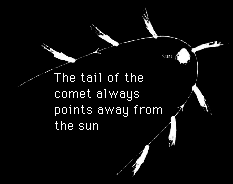This is a drawing of how a comet behaves as it passes by the sun.
Click on image for full size
JPL
When a Comet comes close to the Sun
When comets are kicked out of the Oort Cloud, they begin a passage into the solar system, spinning and tumbling as they come. The trajectory which they acquire can be hyperbolic, parabolic, or elliptic in shape. Only if a comet takes an elliptic trajectory will it make repeated passes by the sun, as does Halley's comet every 76 years.
As the comet comes closer to the sun, near the region of space occupied by Mars it becomes warm enough for the comet to begin to evaporate. When evaporation begins, the coma and tail form.
This picture shows that, once the tails forms, it always points away from the sun. That means that the tail will point in different directions at different places in the comet's orbit.
You might also be interested in:
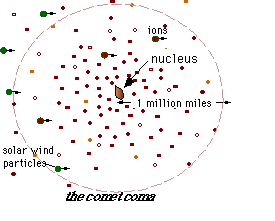
As the ices of the comet nucleus evaporate, they expand rapidly into a large cloud around the central part of the comet. This cloud, called the coma, is the atmosphere of the comet and can extend for millions
...more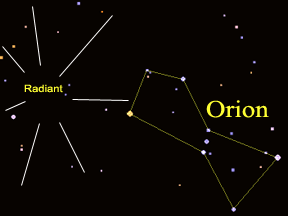
The Orionid meteor shower happens every year in October. Meteor showers are times when you can see many meteors or "shooting stars" in one night. There are several meteor showers each year. Most meteor
...more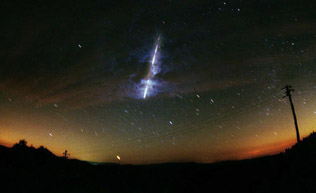
The Leonid meteor shower is one of several major meteor showers that occur on roughly the same date each year. The Leonids typically "peak" (are at their greatest level of activity) in mid to late November.
...more
The Geminid meteor shower happens every year in December. Meteor showers are times when you can see many meteors or "shooting stars" in one night. There are several meteor showers each year. Most meteor
...more
The Quadrantid meteor shower happens every year in January. Meteor showers are times when you can see many meteors or "shooting stars" in one night. There are several meteor showers each year. Most meteor
...more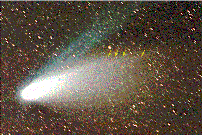
Hale-Bopp continues to offer new surprises as two astronomers report of their study of the comet. Using the Hubble Space Telescope and the International Ultraviolet Explorer, the astronomers did a year-long
...more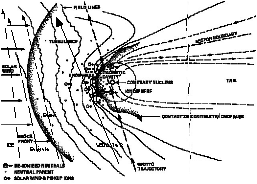
Six spacecraft flew by Halley's comet in 1986. There were two spacecraft launched from Japan, Suisei and Sakigake, and two from the Soviet Union, Vega 1 & 2. One spacecraft, ICE, from the United States
...more


